Clematis are beautiful residents of the garden that do not just transform it to be unrecognizable, but also create a special tropical charm on the plot. These Lianas quickly scramble in fences, willingly grow, if they have enough sun, and actively bloom, hitting the eyes of their beauty. A decent representative of this group of plants is Clematis Miss Beitman.
Clematis Miss Beitman, description
Among Clematis there are more than three hundred species. There are a lot of wild and hybrid forms that have small and large inflorescences of different shades. In culture, only a few dozen Clematis is popular, and among them Miss Beitman is favorably distinguished by the exquisite beauty of large inflorescences.
This variety of Liana is considered wood. This means that in a mature age (older than 3 years), Clematis is becoming dense, fibrous and over time acquire a rigid structure.
To the varietal features of Miss Beitman include:
- Miss Beitman's flower is a chic hybrid, which was named after the daughter of the famous flower of James Beitman.
- The shoots of Clematis Miss Beitman (Miss Bateman) with a proper support reaches 2-3 m.
- Clematis foliage of this variety opened, large, troch-shaped, maximum size in diameter 12 cm.
- Miss Beitman is a large-flowered hybrid. The color of the petals dominates the milk shade, which dilutes the pale purple overflow.
- Neuriy color of petals of Liana Miss Beitman strongly attracts bees, therefore is an excellent honey.
- The variety is characterized by the ability to change the intensity of the color of petals. The smaller the light on it falls, the pale the color of inflorescence becomes.
- With proper trimming, Clematis blooms twice for the summer season.
- Liana Miss Beitman shows a fairly high winter hardiness, rarely subjected to diseases.
- This type of Lian is unpretentious to growing conditions and without special capsurizes adapts to the environment.
- Miss Beitman quickly forms and blooms 2-3 years after landing.
Clematis Miss Beitman, reproduction
Large-flowered lianas breed quite easily. The most acceptable and easiest way is shilling. However, Clematis Miss Beitman, according to the reviews of the gardeners, can be raised from the seed, although this occupation is more troublesome and often ends.
In summer, Liana Miss Beitman is pile with green shoots.
- In the process of bootonization, when shoots are most saturated with nutrients, cuttings cut. At this point, the highest chances of rooting them, so it is not worth missing it. It is also important to ensure that the buds do not have time to reveal.
- It is advisable to chop the side shoots that appeared after last year's trimming. From one Liana more than three cuttings do not cut.
- After that, the received shoots are cut into the cuttings, on each of which the nodules must be present.
- The cut is left straight, over a nodule must be no more than 3 cm, and under it up to 10 cm. Leaves are shortened by half.
- Prepared cuttings rooted in any nutritional soil on the garden. The tops from the plastic bottle are built on top and cuttings regularly.
Important! You can pack cuttings in the fall. To do this, cut the weed shoots, immerse them in a box with peat-sanded soil, moisturize and hid. In the spring, the drawer is placed in greenhouse conditions and start watering.
Clematis Miss Beitman, landing features
Liana Miss Beitman is a plant, though not capricious, but needs to create certain conditions of growth. In choosing a place, most importantly, what attention pays attention is lighting. The plot must be spacious, sunny, but without a direct scorching sun.
The soil for the Liana will fit loose, breathable, sublinous. She must be willing to pass water, but does not create its stagnation at the same time. It is also important to note that all the lianas do not develop in an acid substrate.
Given the features of Clematis Miss Beitman, it is important to comply with the landing rules:
- It is highlighted for Lian enough of the garden.
- Create alkaline soil for it, without excessive concentrations of salts.
- So that the rooting of Liana passed without complications, landing works start with the arrival of spring, or no later than September.
- Since Liana Miss Beitman is actively crawling up, for its normal growing vegetation, supports support. It should be no less than 2 meters. Access to Lian from all sides is also important, which will be required during the trimming period.
- When landing still sleeping Liana, it is necessary to slightly twist it with a glimpse of the root system. To do this, it is enough to soak the roots for 2-3 hours in conventional water.
- At this stage, it is processed to prepare the landing pit. The depth of the pit is made according to the value of the plant: the older Liana, the deeper the pit it will take.
- Prepare a mixture of humus and peat, a little sand and ash are added.
- Then the prepared soil is introduced into the dug hole, they immerse the rhizome of the liana and fall asleep the remaining earth to the level of the root neck.
- After planting, the liana is watered and mulched peat.
How to care for Lian Miss Beitman
So that Liana grew rapidly and annually bloom, you need to care for it. Care is quite light and includes watering, trimming and regular feeding.
Clematis Miss Beitman, watering and feeding
- It is necessary to irrigate the soil in the priority circle. The level of moisture penetration must be at least 50 cm. After irrigation, the soil is slightly loosened so that the crust is not formed. Write malls with sawdust or peat.
- The first feeder after landing is carried out for the next year before wintering. The root area is picked up with organic fertilizers or mineral salts.
- In the spring, at the stage of vegetation, nitrogenous additives or lime milk are introduced (a mixture of water, hated lime and chalk).
- Complex mineral supplements for flowering crops make three times: at the time of the bootonization, after the first spring flowering, after trimming.
Clematis Miss Beitman, Pruning and wintering
Clematis Miss Beitman is cut to form a beautiful view and stimulation of abundant flowering. Pruning is carried out superficial without cardinal shortening of shoots. If a plant is too hard, there is a risk of his death.
Pruning begin in summer as shoots of shoots. Some Liana Miss Beitman bloom twice, so they are trimmed in late autumn before shelter. In the process of trimming, the shoots shorten up to 1.5 m above the ground. Annual shoots shorten on a quarter, and all the pitched - completely cleaned. Liana after trimming is removed from the support, laid and covered with underfloor material.
Clematis Miss Beitman, Diseases and Pest
Liana Miss Beitman relatively rarely sick. But with non-compliance with the rules of care, the plant may be subjected to viral and fungal diseases.
- The most dangerous is a viral mosaic. It is impossible to get rid of it, so Clematis is treated with carbofos.
- To prevent fungal diseases, it is necessary to ensure normal regulation of humidity. In preventive purposes, Fundazole can be used.
- From pests on Clematis you can notice the TRU. Her colonies are massively devouring the leaves, worsening the decorativeness of the plant. Get rid of pests will help phytodeterm or infusion of Celebrela.
- Also possible by the invasion of the pawkin tick. It develops under conditions of too dry air. To prevent infection, Clematis needs to spray. A accility is used to destroy ticks.
Liana Miss Beitman with sufficient care does not create trouble and beautifully decorate the garden. Therefore, this type of Clematis remains one of the most popular.

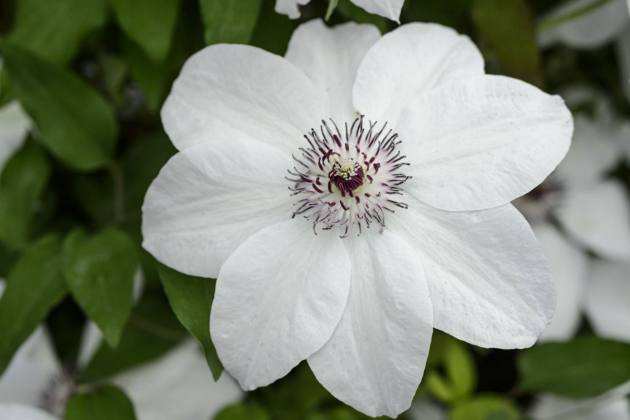
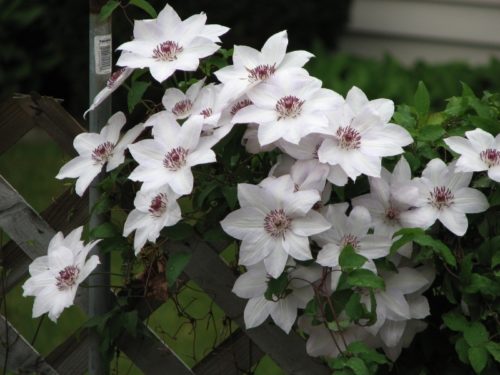
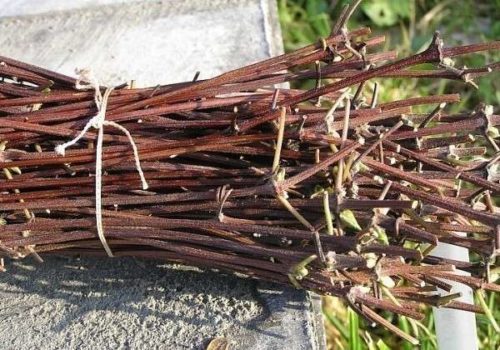
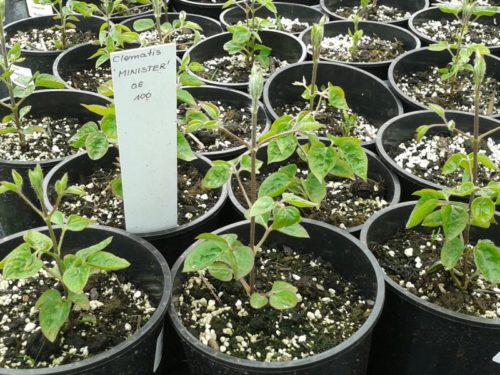
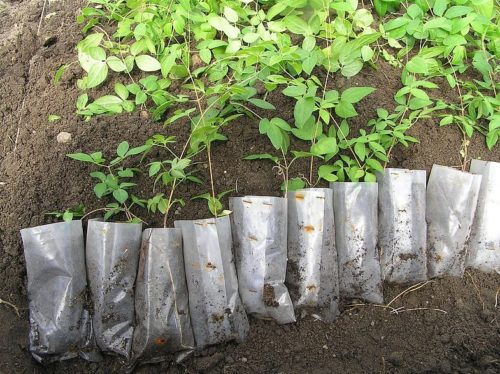
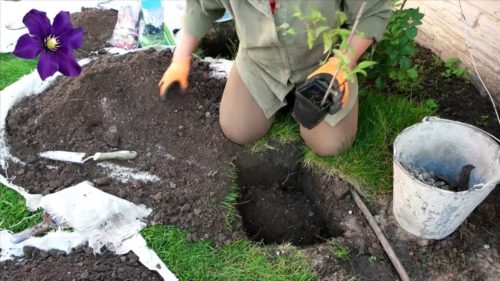

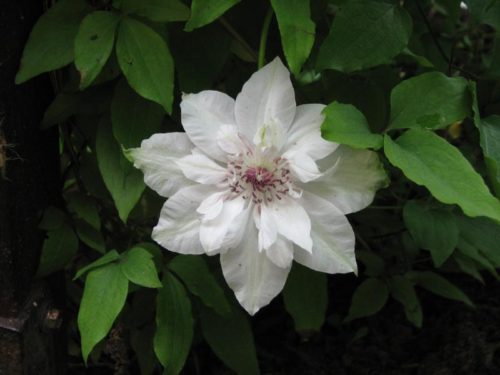
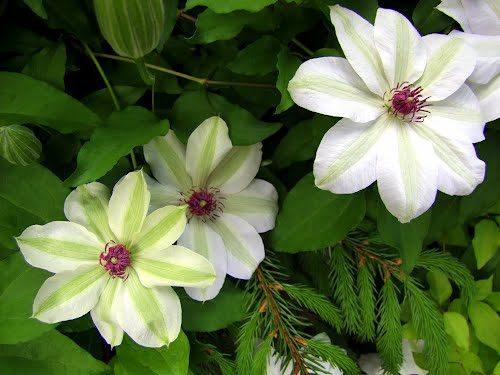














 Start a discussion ...
Start a discussion ...